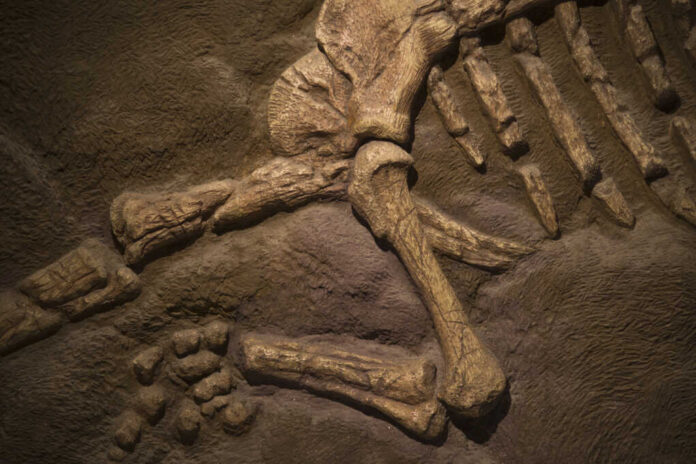
A mysterious bone disease that plagued Brazil’s giant dinosaurs 80 million years ago has been unearthed, challenging our understanding of prehistoric life.
Story Highlights
- Fossilized sauropod bones in Brazil show evidence of a deadly bone infection.
- The infection, known as osteomyelitis, was likely spread through stagnant water or insects.
- Research underscores infectious disease as a key factor in dinosaur extinction.
- Findings provide rare direct evidence of disease in sauropods, expanding scientific knowledge.
Discovery of Dinosaur Infections in Brazil
Paleontologists have uncovered fossilized bones in Ibirá, São Paulo, Brazil, revealing unhealed lesions indicative of osteomyelitis, a severe bone infection. This discovery suggests that dinosaurs were plagued by deadly infections likely transmitted through stagnant water or insect bites during the Late Cretaceous period. The study, published in *The Anatomical Record* in September 2025, highlights the significant role infectious diseases played in dinosaur mortality and extinction.
Fossil discoveries at the Vaca Morta site, spanning 2006 to 2023, have shown that multiple sauropod individuals suffered from active, unhealed bone infections. This research provides rare, direct evidence of infectious disease in sauropods and expands our understanding of paleopathology. By differentiating osteomyelitis from other bone pathologies, the study aids future fossil analyses, offering new insights into the health challenges these ancient creatures faced.
A set of sauropod bones, found in the state of São Paulo, Brazil, reveals that the region was conducive to a bone disease that was fatal to these animals.https://t.co/3BQa3n7WVH#fossils #paleontology pic.twitter.com/gfHZ1xwYeM
— Earth Archives (@EarthArchivesHQ) September 1, 2025
Environmental Factors and Pathogen Transmission
The São José do Rio Preto Formation, characterized by arid conditions and stagnant water bodies, provided an environment conducive to pathogen proliferation. These conditions likely facilitated the spread of bone infections among the sauropod population. The study emphasizes the environmental role in pathogen transmission, suggesting that diseases were a significant, overlooked factor in the decline of dinosaur populations. Previous research in the region has documented similar infections in other sauropods, underscoring the prevalence of such diseases.
Advances in paleopathology have enabled the identification of osteomyelitis in dinosaur fossils. Researchers, led by Tito Aureliano of the Regional University of Cariri, aim to advance the understanding of dinosaur health and extinction dynamics. Collaborating institutions, including the University of Campinas and the Federal University of Rio Grande do Norte, have contributed to these discoveries, supported by the São Paulo Research Foundation.
Implications for Paleontology and Beyond
These findings have significant implications for paleontology, offering enhanced understanding of dinosaur disease and mortality. The research could improve paleopathological methods and provide insights into prehistoric ecosystems. The increased scientific interest may boost funding and tourism in Brazilian paleontological sites, and findings could influence educational curricula and museum exhibits. Advances in paleopathology may also inform archaeological and forensic research, with cross-disciplinary relevance for parasitology, pathology, and evolutionary biology.
Experts like Tito Aureliano stress the importance of recognizing infectious disease as a major factor in dinosaur extinction. Histological and imaging techniques used in the study have enabled precise diagnosis of osteomyelitis. While minor uncertainties remain regarding transmission pathways, the research provides a clearer understanding of the health challenges faced by dinosaurs, contributing to the broader scientific narrative of their extinction.
Sources:
A deadly bone infection may have wiped out Brazil’s long-necked dinosaurs
Giant long-necked dinosaurs struggled with fatal bone disease
Giant long-necked dinosaurs struggled with fatal bone disease
Cretaceous titanosaur blood parasites and osteomyelitis
Fossilized bones reveal a deadly bone disease in southeast Brazil’s long-necked dinosaurs


















